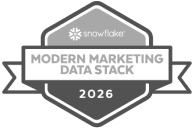What are the key aspects of data lineage?
Data lineage refers to the life cycle of data, encompassing its origins, transformations, and movements over time. It is a fundamental aspect of data management that provides visibility into the data's journey through various systems and transformations. Understanding automated data lineage improvements can enhance governance and compliance significantly.
This visibility is essential for organizations to ensure data quality, trace errors, conduct impact analysis, and comply with regulations. Key aspects include identifying data sources, tracking data flows and transformations, recording data destinations, and capturing metadata.
How does data classification enhance data security?
Data classification involves organizing data into categories based on sensitivity, content, and importance. This process is crucial for applying appropriate security measures to protect sensitive information from unauthorized access or breaches. By understanding the level of sensitivity, organizations can prioritize security measures accordingly.
Effective data classification supports regulatory compliance, enforces access controls, aids policy development, and necessitates regular reviews to adapt to the evolving data landscape. This ensures that only authorized personnel access sensitive information while complying with laws like HIPAA or PCI-DSS.
Why is understanding data lineage important for businesses?
Understanding data lineage is vital for businesses as it provides a clear picture of how data is sourced, used, and transformed within the organization. This understanding is key to maintaining data accuracy and integrity. For a deeper insight, consider exploring a complete guide to data lineage.
Moreover, data lineage supports business intelligence and analytics by ensuring that the data used for decision-making is reliable and up to date. It enhances compliance, provides a clear audit trail, aids in risk management, and fosters collaboration by offering a common understanding of data processes.
What challenges do organizations face in implementing data lineage and classification?
Implementing data lineage and classification presents challenges such as mapping data across diverse systems and managing data classification policies. Organizations must invest in the right tools and establish clear policies to manage these processes effectively. Understanding data intelligence tools can be crucial in overcoming these challenges.
Challenges include system integration complexity, policy maintenance, stakeholder engagement, regulatory compliance, and resource allocation. Organizations need to ensure tools work across different technologies, maintain up-to-date policies, engage stakeholders, comply with regulations, and allocate sufficient resources.
How do data lineage and classification support data governance?
Data lineage and classification are foundational elements of data governance, providing the transparency and control needed to manage data effectively. These processes ensure data handling aligns with organizational policies and regulatory requirements.
Data lineage offers an audit trail essential for compliance, while data classification helps define roles and responsibilities. Together, they enable standardization, support data quality initiatives, and enforce policies around data usage, access, and security. This ensures that data is managed consistently and accurately across the organization.
How can I get started with Secoda's services?
If you're interested in exploring what Secoda has to offer, the best way to begin is by reaching out to their sales team. They can provide personalized guidance and solutions tailored to your specific needs. For those ready to take the next step, you can get started today by contacting their sales department.
What is data lineage and why is it important?
Data lineage refers to the tracking of data as it moves through various stages, from its origin to its final destination. This process is crucial for understanding the data's journey, ensuring accuracy, and maintaining data quality. By mapping out the data flow, organizations can identify any changes or transformations the data undergoes, making it easier to troubleshoot issues and ensure compliance with regulations.
In today's data-driven world, having a clear view of data lineage helps businesses make informed decisions, enhances transparency, and supports data governance initiatives. It also aids in improving data quality by identifying and rectifying errors early in the process. For organizations looking to implement a robust data lineage strategy, Secoda's data lineage platform offers comprehensive solutions to track and manage data effectively.
What benefits can I expect from using Secoda's data lineage platform?
Secoda's data lineage platform offers several key benefits that can significantly enhance your data management processes:
- Enhanced Transparency: Gain a clear view of data flow across your organization, making it easier to track and manage data.
- Improved Data Quality: Identify and rectify data errors early, ensuring higher quality and reliability.
- Regulatory Compliance: Meet compliance requirements by providing detailed data lineage documentation.
- Efficient Troubleshooting: Quickly pinpoint and resolve issues within your data pipeline.
- Better Decision-Making: Utilize accurate and reliable data to make informed business decisions.
To explore these benefits further and see how they can apply to your specific use case, consider reaching out to Secoda to get started today.






.png)
.png)








